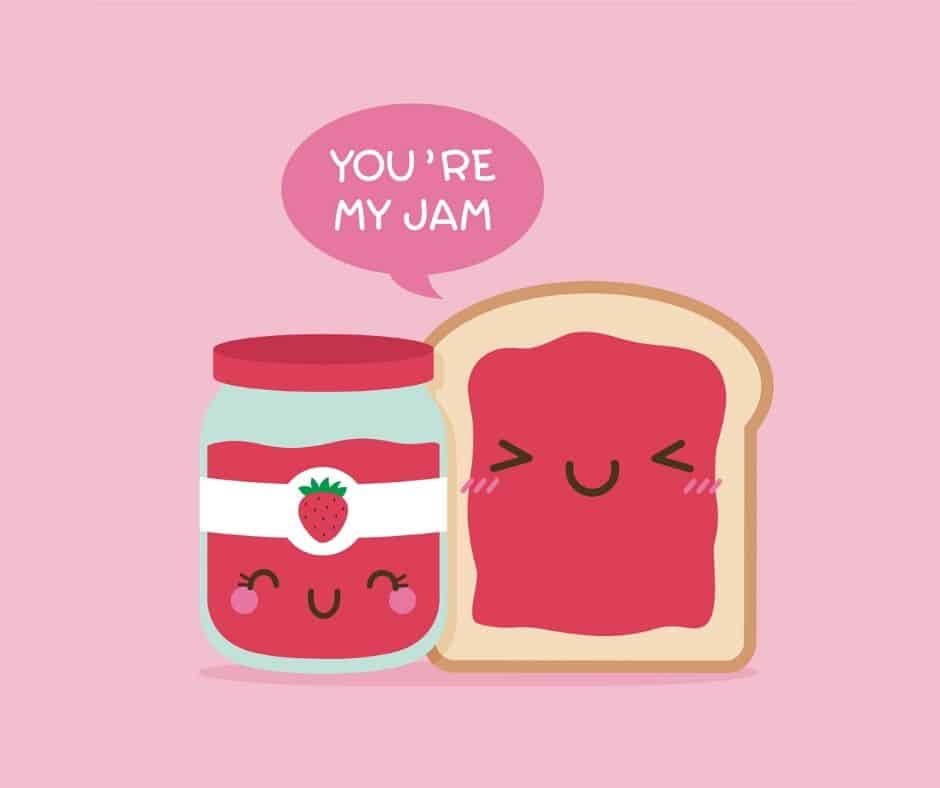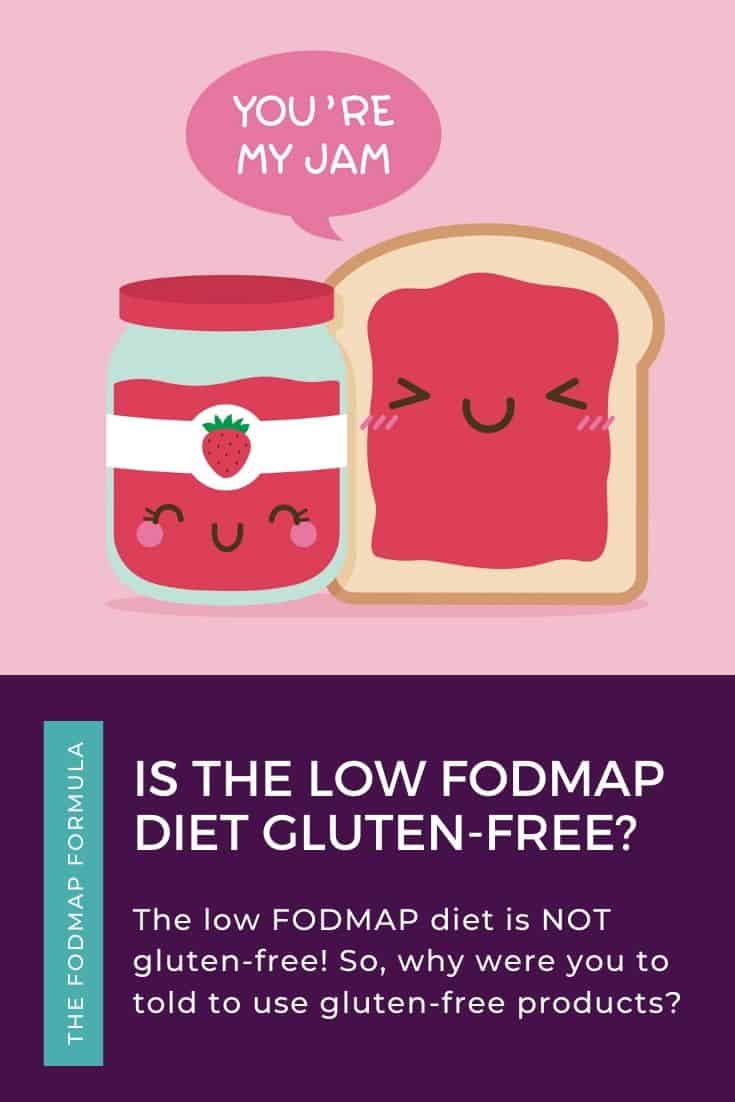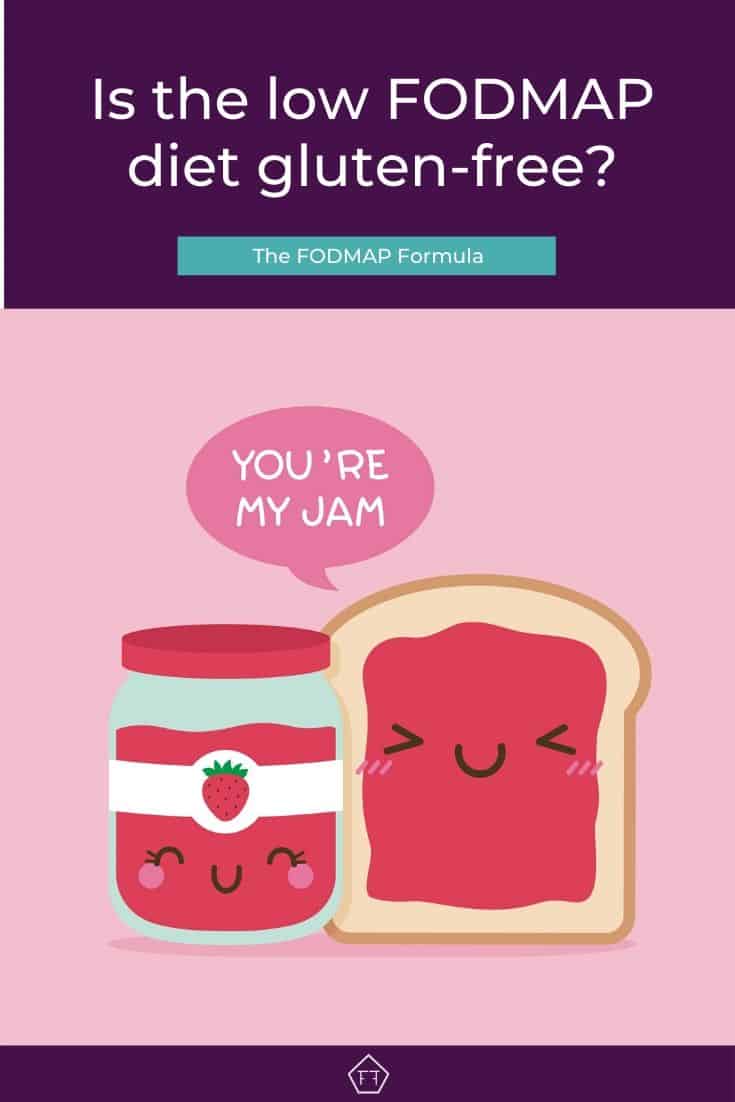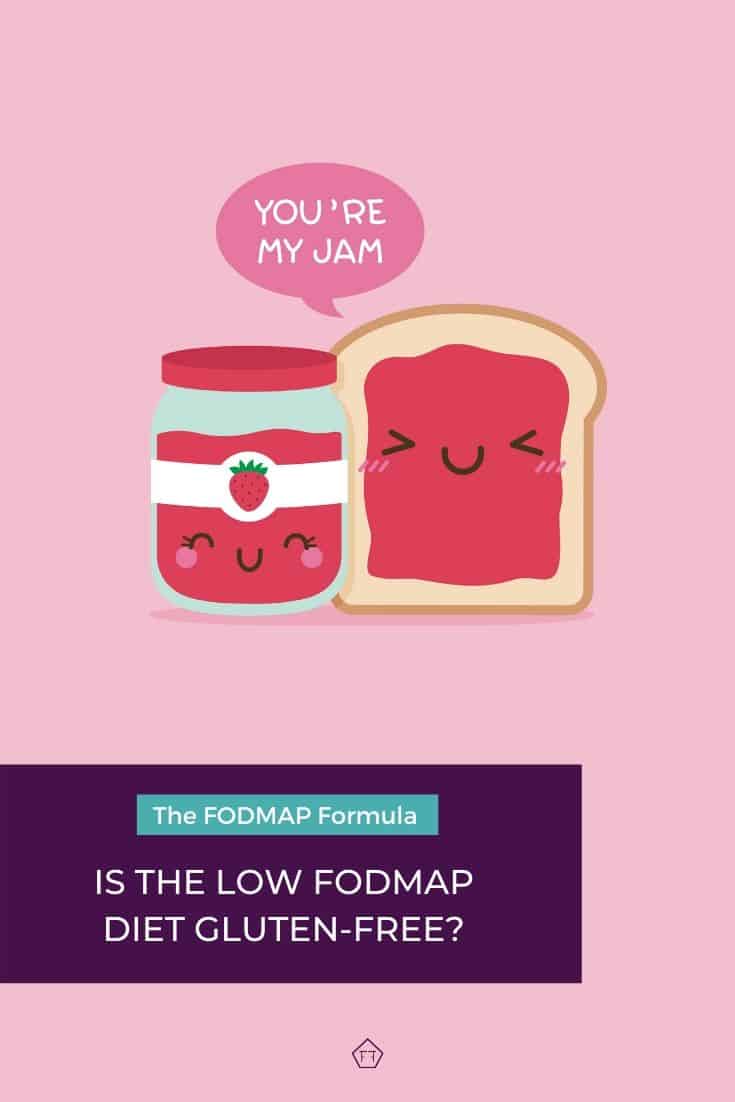There’s a lot of confusion in the IBS community about whether or not the low FODMAP diet is gluten-free. So in this article, we’re going to talk about the difference between gluten and FODMAPs and why the low FODMAP diet is not a gluten-free diet.

What is gluten, and who should follow a gluten-free diet?
Gluten is a family of proteins found in grains like wheat, barley, rye, and some oats. These proteins are divided into two subgroups: “gliadin” and “glutenin.” The gliadin group helps doughs rise while glutenin helps dough to stretch.
There are a few reasons a person may need to follow a gluten-free diet, including a wheat allergy or autoimmune disorders like celiac disease, gluten ataxia, or dermatitis herpetiformis.
Wheat allergy
Allergic reactions typically begin where the wheat made contact with the body. But may spread to other parts of the body, as well.
Symptoms may include asthma or allergic rhinitis, or trouble breathing when wheat is inhaled. Hives, rashes, and swelling when wheat or wheat-containing products make contact with the skin. And diarrhea, abdominal pain, or vomiting when wheat is ingested. In some cases, exposure to wheat may cause an anaphylaxis reaction. Currently, about 0.4% of the population suffers from a wheat allergy.
Wheat allergies are managed by following a strict gluten-free diet.
Celiac disease
Celiac disease is an autoimmune disorder that impacts roughly 1% of North Americans. When a person with celiac disease eats food or ingests products containing wheat, their immune system misinterprets gluten proteins as harmful to the body.
This immune response can trigger inflammation, make the barrier between our gut and our bloodstream easier to pass through, and damage the lining of the intestine, including the tiny villi that line the small intestine.
Villi are like tiny fingers or bristles that line the small intestine. They help increase the surface area of the small intestine, which helps us absorb more nutrients as food passes through our gut. When villi are damaged, a person may have trouble absorbing enough nutrients from their diet.
People with celiac disease may also experience more visible symptoms like diarrhea, bloating, and abdominal pain, among other things.
Currently, celiac disease is managed by following a strict gluten-free diet.
What are FODMAPs, and who should follow a low FODMAP diet?
In 2005, Monash University identified a group of short-chain carbohydrates (sugars) called FODMAPs. This word sounds ridiculous because it’s an acronym for Fermentable Oligosaccharides, Disaccharides, Monosaccharides, and Polyols.
These particular sugars are absorbed slowly by the digestive tract, or they aren’t fully broken down by the time they reach the large intestine. According to Monash, up to 75% of people with IBS have trouble digesting at least one type of FODMAP (there are five sugars tested in total).
When FODMAPs aren’t digested properly, they can pull water into the bowel, causing bloating and distention, cramping, and diarrhea or constipation.
Because these sugars are so small, they’re also easily fermented by our gut bugs. This can cause increased gas in the large intestine, leading to bloating and distension, wind, and abdominal pain.
The low FODMAP diet was created as a short-term tool to help people with IBS identify which FODMAP groups they’re sensitive to (if any). According to current research, the low FODMAP program helps 3 out of 4 people reduce their daily symptoms by up to 50% or more.
While the low FODMAP diet was initially designed for people with IBS, researchers are currently studying whether or not the low FODMAP diet could also be useful for other groups who experience digestive symptoms. – Like small intestinal bacterial overgrowth (SIBO), endometriosis, and endurance athletes.
Gluten Vs. FODMAPs
Gluten is a protein found in grains like wheat, barley, rye, and some oats, while FODMAPs are a group of short-chain carbohydrates (sugars) that are poorly digested by people with IBS.
The low FODMAP diet is not a gluten-free diet.
Why did my healthcare team tell me to eat gluten-free?
Most confusion around gluten and FODMAPs comes from the fact that people who follow the low FODMAP diet are encouraged to use gluten-free products like pasta, bread, and cereals. So, what’s the deal?
Fun fact! Gluten-containing grains like wheat, barley, and rye also contain a FODMAP called fructan. So during the elimination and re-challenge phase of the low FODMAP program, it makes sense to use gluten-free products like pasta, bread, and cereal, because they’re certified wheat, barley, and rye free.
What’s not always clear, is that we’re trying to manage our intake of fructan, not gluten itself.
Are all gluten-free products low FODMAP?
No. Not all gluten-free products are low FODMAP! It’s important to remember that just because a product is free of one high-FODMAP ingredient, doesn’t mean it’s free of all FODMAPs.
In fact, many gluten-free products use high FODMAP ingredients like inulin/chicory root, amaranth flour, almond flour, and coconut flour to improve their texture and high FODMAP sweeteners like honey, agave syrup, and high FODMAP fruit juices and purees to improve their taste.
Don’t panic, friend! There are still lots of low FODMAP products available (you can see lots of Monash-certified products in the official Monash University app)! Just don’t forget to check the label when you’re shopping.

Will a gluten-free diet help reduce my IBS symptoms?
This is a tricky question! The short answer is: it depends.
The long answer is that it depends on a few things. First, do you have a wheat allergy or an autoimmune disorder like celiac disease? If so, then yes, following a strict gluten-free diet will help manage those issues.
Second, are you sensitive to fructans? If your body doesn’t digest fructans correctly, lowering your daily intake of fructan-containing grains like wheat, barley, and rye can help control your digestive symptoms.
This is one of the reasons some people with IBS feel better when following a gluten-free diet. While it’s logical to assume gluten was the culprit, going gluten-free also inadvertently cuts out a common source of FODMAPs.
Should I be tested for celiac disease?
If you think you have celiac disease, talk to your doctor before you make any dietary changes! To be correctly tested for celiac disease, you need to eat gluten for several weeks leading up to your test(s), or you may get a false negative.
As we discussed earlier, celiac disease can cause physical damage to your body, even in small doses. So if you or your doctor think celiac disease may be the culprit behind your symptoms, complete these tests before you do anything else.
Final Thoughts
There’s a ton of confusion in the IBS community about whether or not the low FODMAP diet is gluten-free. A lot of this uncertainty centers around FODMAPers using gluten-free products during the elimination phase of the low FODMAP program. But it’s important to remember that unless you have celiac disease or a wheat allergy, you’re trying to avoid the FODMAP fructan. Not gluten itself.
You might also like one of these:
- Is your gluten sensitivity really an intolerance to fructans? Gluten isn’t the only thing in your grains that can turn your tummy! Check out this article to understand the difference between gluten and fructan sensitivity and how to find out which one you’re actually reacting to.
- Understanding lactose intolerance Wondering if lactose intolerance may be the culprit behind your tummy troubles? Let’s talk about what lactose intolerance is, how it’s tested, and how to manage your daily symptoms if you have it.
- What are probiotics and prebiotics? Wondering if adding probiotics or prebiotics to your daily routine will help tame your IBS symptoms? Here’s the scoop on how these cheeky little bugs can help or hurt you.
If you like this post, don’t forget to share it! Together we’ll get the low FODMAP diet down to a science!



